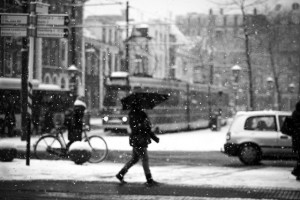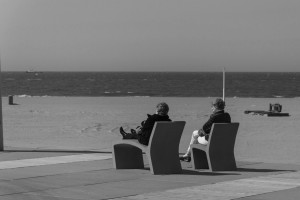Getting Creative in Dutch Posted by Karoly Molina on Sep 16, 2015 in Dutch Language
One of my favourite activities to use with language learners is creative writing. Although not many students will enjoy creative writing assignments at first, the benefits make the effort worthwhile. With creative writing activities, language learners make use of the language in a more precise and thoughtful way because they must carefully select their words in order to get their point across. Because it is done in a much more personal setting, language learners have the time to formulate their sentences better.
There are a variety of creative writing activities for practicing a language. Sometimes you might have an idea for a short story in mind, but sometimes creativity doesn’t come and we need to stimulate it. This is why I find photographs to be most beneficial for creative writing.
With a photograph, we can gradually stimulate the creative side of ourselves. You can start by describing the photograph. Afterwards, speculate what the objects in the photograph are doing. Is the person walking home from work? Perhaps he/she is on their way to dinner with the family. Once your subjects have a destination (or a place where they came from) speculate what they were doing there or what will they do. Are they happy about this?
It is important not to hold back with the speculation. It doesn’t matter how silly or illogical your story sounds. What is important is to keep on writing…in our case, in the target language.
Here is one example I wrote:
Zij vindt het leuk om na werk te wandelen. Zij heeft geen precieze bestemming; wat belangrijk is, is lopen. Sommige dagen vindt zij het leuk om naar een park te wandelen. In het park kan zij de bomen en bloemen zien. De mensen in het park zijn ook interessant. Sommige mensen lopen met honden, andere met kinderen.
Voor haar is de regen of sneeuw niet belangrijk. Het uitzicht is altijd mooi. Vandaag is een speciale dag want het sneeuwt. Zij kijkt naar de straat en de autos en hoe de sneeuw zit. Sommige mensen lopen snel naar huis. Andere kijken op naar de lucht met verwondering. Maar voor haar ligt de verandering op de straat. Wat kan mooier zijn dan dit?
I chose to write the example in the third person using describing what the girl was doing as a narrator that is simply observing. You can also do it in the first person and making yourself the character of the photograph. You can try alternating who the subject is so that you can practice the different verb conjugations. You can also practice writing about what the character did before the photograph in order to practice the past conjugations and other times what he/she will do afterwards to practice using the present and future tenses.
Give the following photograph a try. If you’d like to share your story, include it in the comments below.
Useful questions to answer to get started:
Wat zie je?
Wie is in de foto?
Zijn zij familie of partners of vrienden?
Wat doen zij?
Gaan zij ergens naar toe?
Zijn zij blij/triest/boos? Waarom?

Build vocabulary, practice pronunciation, and more with Transparent Language Online. Available anytime, anywhere, on any device.
About the Author: Karoly Molina
Since I was a little girl, I was fascinated with languages and writing. I speak English, Spanish, Italian, Dutch and a little bit of French. I am a writer, reader, language teacher, traveler, and a food lover! I now live in The Netherlands with my husband Riccardo, our cat Mona, and our dog Lisa, and the experience has been phenomenal. The Dutch culture is an exciting sometimes topsy-turvy world that I am happily exploring!






Comments:
Melissa Guensler:
Twee oude vrouwen zitten samen op het strand. Ze zijn vrienden sinds ze kinderen waren. Ze komen elke dinsdag om te zitten en te praten. Hun mannen zijn dood en hun kinderen wonen ver weg, maar ze hebben nog steeds een goede tijd samen. Soms is het voldoende om stil te zitten, elk met het andere.
Karoly G Molina:
@Melissa Guensler Wat leuk Melissa! Dank je 🙂
Melissa Guensler:
This was fun! I’m slowly learning some Dutch online and this exercise really helped to get me thinking “outside the box.” Thank you!
Karoly G Molina:
@Melissa Guensler Melissa, I am glad you enjoyed it! I like that activity for the same reason! It’s a different way of writing and it gets you thinking a bit more in Dutch.
Storytrail:
Beautifull old pictures. Where are they taken?
Karoly G Molina:
@Storytrail These are not my photographs. I found them on Flickr 🙂